The Marin Hawk Hill 3 Is a Lot of Trail Bike for $2,650
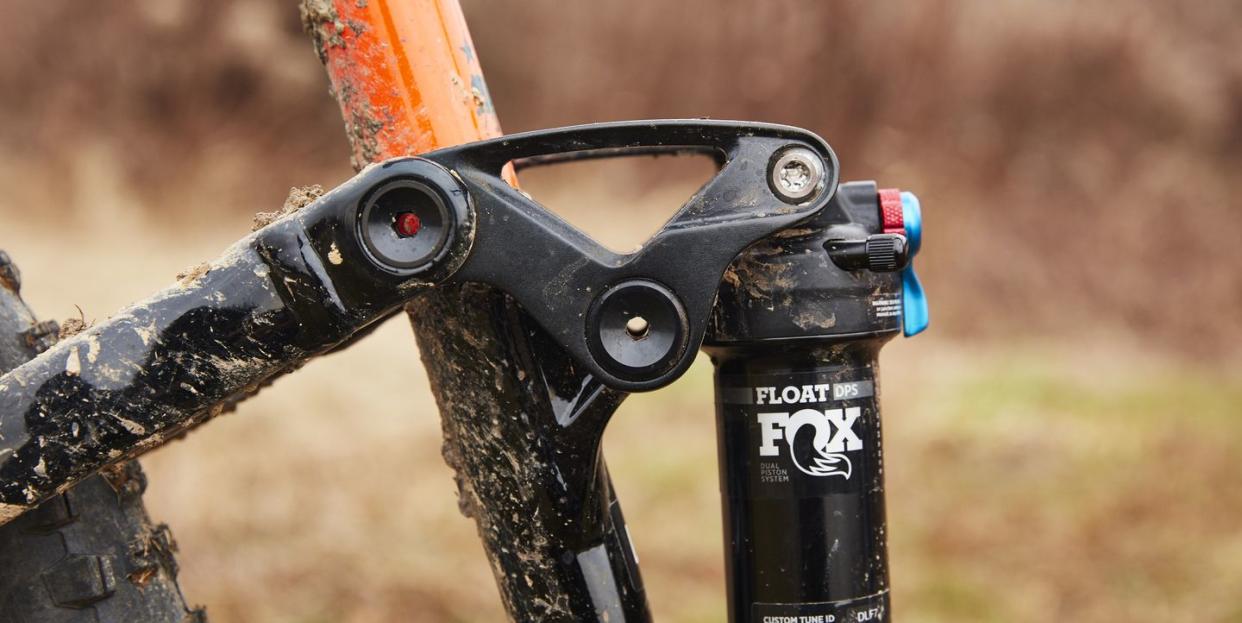
Price: $2,650
Weight: 30.7 lb. (large)
Style: Trail
Wheel size: 27.5 in
Tire clearance: 2.6 in
Frame material: 6061 aluminum
Fork travel: 130mm
Frame travel: 120mm
Drivetrain: Shimano SLX, 11-speed
The right bike for: Ripping almost any trail on a budget
Most mountain bikers have a dream build, and most mountain bikers also lead lives that stand between them and the carbon-fiber, SRAM Eagle-equipped trail rig of their fantasies. For them, there’s the Marin Hawk Hill 3. At first glance, the componentry is a patchwork of parts from myriad manufacturers, but everything works in harmony and the varied selection maximizes value for money. With its 150mm dropper post, buttery-smooth RockShox Revelation RC fork, and Fox Float Performance shock, the Hawk Hill 3 should dent your bank account more than it does.
But good bikes are better than the sum of their parts, and the Hawk Hill 3’s versatility proves it has more to offer than an impressive spec sheet. The frame is marginally longer and lower for 2019, and the MultiTrac suspension system feels progressive on punishing descents yet sensitive over small bumps. The bike doesn’t pedal as well as those with fancier, more expensive multi-link systems, but its tune feels snappy and playful, especially on smooth and flowy trails. In a month’s testing, I made every attempt to find a trail that threw the Hawk Hill 3 off its game: I failed, and for me, that’s why the Marin succeeds at its attempt to be the working cyclist’s short-travel trail bike.
Longer and Lower Geometry
Marin tweaked the Hawk Hill 3’s geometry for 2019 to reflect the desires of today’s trail riders, says Marin MTB Product Manager Matthew Cipes. The 66.5-degree head tube angle is 1 degree slacker, and on the large size frame, the 465mm reach is 15mm longer (the stem has been shortened from 45mm to 35mm) and the 727mm standover height is 15mm shorter than it is on the 2018 bike. Those numbers match up with competing short-travel trail bikes from the likes of Cannondale, Kona, and Santa Cruz, although the standover and 597mm stack height are among the lowest in the range. There’s a 148x12mm Boost thru-axle, and you also get a 780mm handlebar and short seat tube that accommodates dropper posts up to 200mm on the large and XL frame sizes, Cipes says.
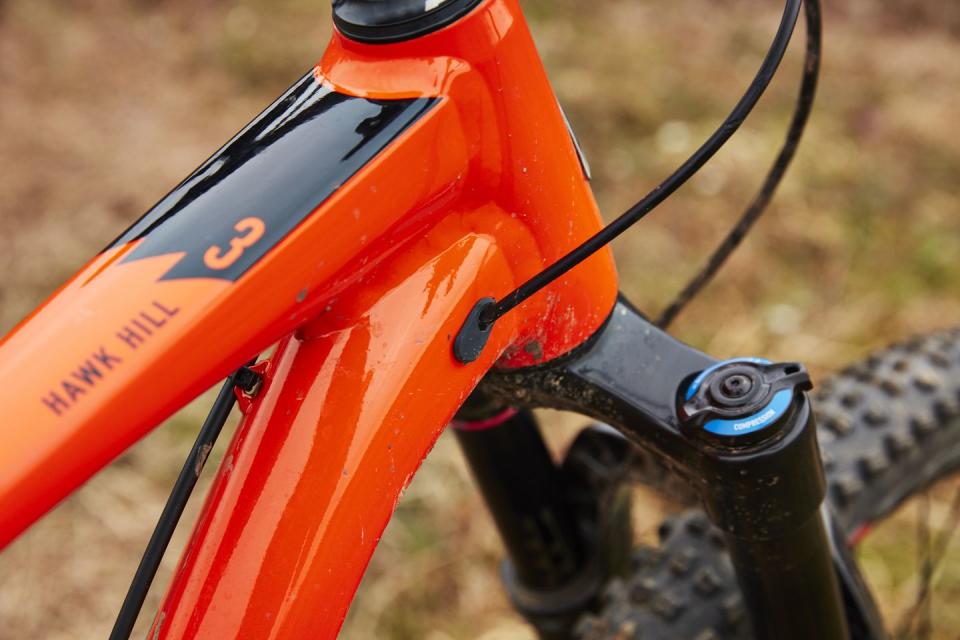
Tweaked and Tuned Suspension
Marin’s MultiTrac Suspension Platform is a single-pivot design that made its debut on the 2017 Hawk Hill; it’s also an evolution of Marin’s former IsoTrac system. The goal with MultiTrac, Cipes says, was to keep IsoTrac’s snappy nature and mid-support control while improving small-bump sensitivity and delivering a pedaling platform that renders the shock’s lockout switch unnecessary on trails. The Hawk Hill 3 gives up some pedaling efficiency and small-bump sensitivity compared to the reactive suspension on Marin’s Wolf Ridge series, Cipes says, but the single-pivot MultiTrac system is much cheaper and easier to maintain. Predictably, the Hawk Hill 3 doesn’t feel as efficient as a bike with dual-link or reactive suspension, but the anti-squat was effective enough on climbs and flat sprints—more on that later.
The suspension itself is good value for the money: Trail bikes in the $2,500 range tend to use either Fox Float Performance or RockShox Deluxe R shocks, but the Hawk Hill 3’s RockShox Revelation RC fork is among the best at the price. The fork’s DebonAir spring aims to reduce friction, the company states, and the fork felt as smooth as Kenny G’s jazz during testing.
High-Value Componentry
Marin employs a Shimano SLX drivetrain for the Hawk Hill 3, although the company equipped a SunRace 11-46t cassette “due to the better and more even jumps in the cassette,” Cipes says. The shifting is fast and crisp and there’s no extra hesitation when you call up the 46-tooth climbing gear. I had a handful of pedal strikes on the 175mm FSA crankset. Similar bikes often come with SLX or SRAM’s NX and GX drivetrains, although the bike’s Tektro Orion brakes are less common. There’s a lot of stopping power—the brakes use a four-piston design and 203mm and 180mm respective front and rear rotors—but less modulation than SRAM Level brake systems (which are more common at the price).
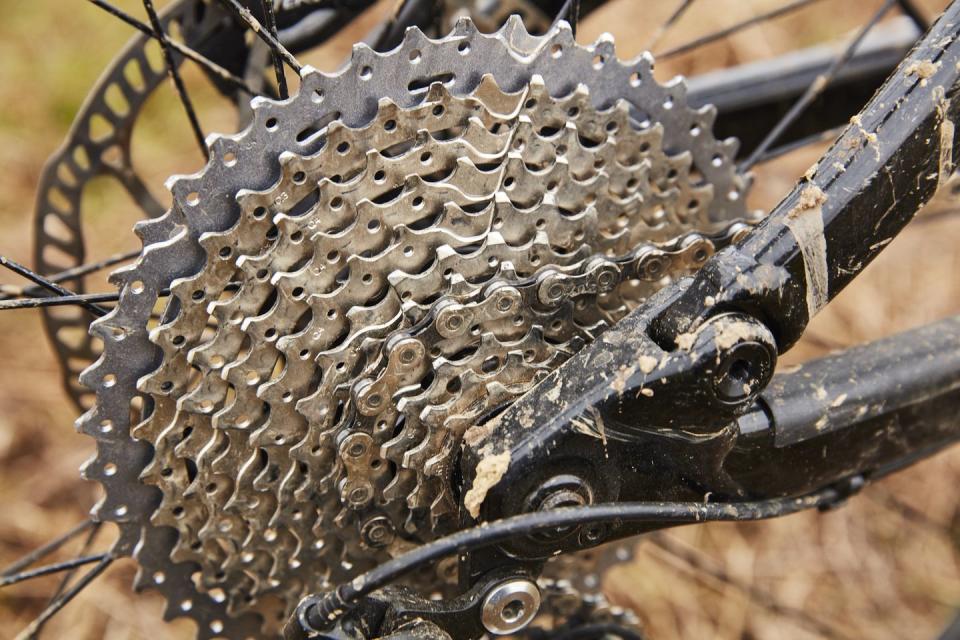
The handlebar, stem, and rims are made by Marin’s own supplier. Although the wheels are tubeless-ready, you’ll have to buy your own tape, valves, and sealant. The WTB Trail Boss tires are 2.4in wide, although the frame will accommodate some, but not all, 2.5 and 2.6in models. The 150mm X-Fusion Manic dropper post is one of the longest you’ll find on a short-travel trail bike; it performed flawlessly throughout testing.
Bike Family
The Hawk Hill 3 is Marin’s top short-travel trail bike at the 27.5-inch wheel size (the Rift Zone line is the 29er version of the Hawk Hill). The $1,950 Hawk Hill 2 uses a 130mm RockShox Recon RL fork, a RockShox Deluxe R shock, and a SRAM NX 11-speed drivetrain; you still get the X-Fusion Manic dropper post, too. The $1,600 Hawk Hill 1 also uses the Recon fork, but comes with an X-Fusion O2 Pro R shock and a Shimano Deore Shadow Plus 10-speed rear derailleur with a Deore shift lever (there’s no dropper, though).
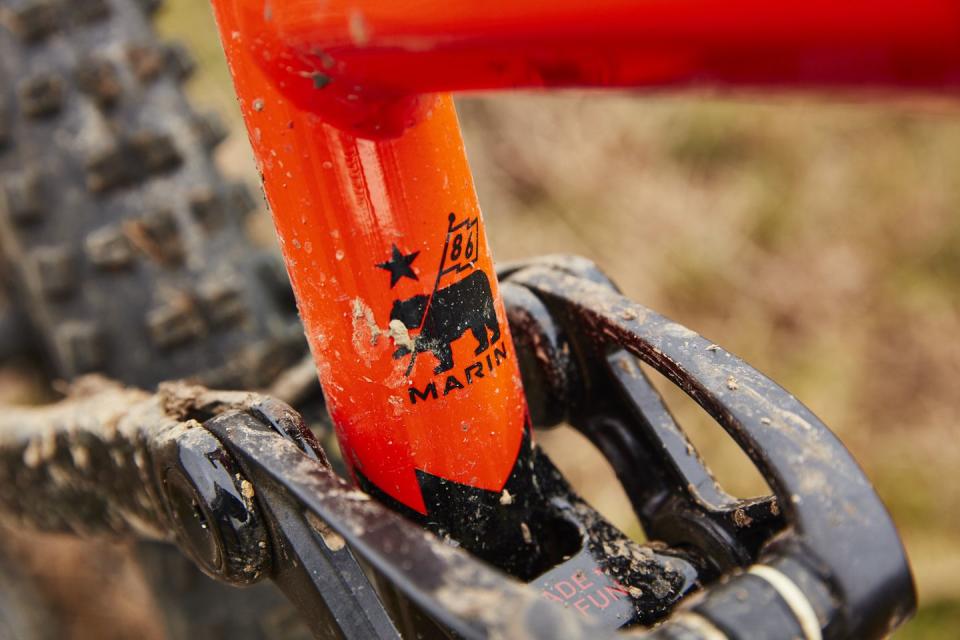
Ride Impressions
Marin has tweaked and tuned its MultiTrac suspension system and corresponding Fox Float Performance shock to achieve a progressive leverage ratio. In other words, it’s supposed to be sensitive over small bumps while feeling like a longer-travel bike on bigger hits. That’s the goal of most suspension systems, but the Hawk Hill 3 strikes a balance that pedals well enough for cross-country riding and handles the steeps without feeling out of its element. After a month of riding the bike on trails rocky and smooth, flat and hilly, I’m not certain the Hawk Hill 3 excels at any one thing. But you’d be hard-pressed to find a bike that does, while being as universally capable and costing less than a kidney.
We test bikes in Pennsylvania’s Lehigh Valley where there’s nearly more rocks than dirt. With compression damping set wide open, the bike’s small-bump sensitivity was impressive. It ironed out rocky and rooty sections of trail quite well, and another tester said the Hawk Hill 3 inspired confidence as she rode through rock gardens. The intent of the anti-squat is evident, but the bike still bobs a bit more than you’d like under hard pedaling—increasing compression damping remedies this on smoother trails, which is a valid solution if you’re riding that kind of terrain. It’s a good pedaling platform, but not quite a great one.
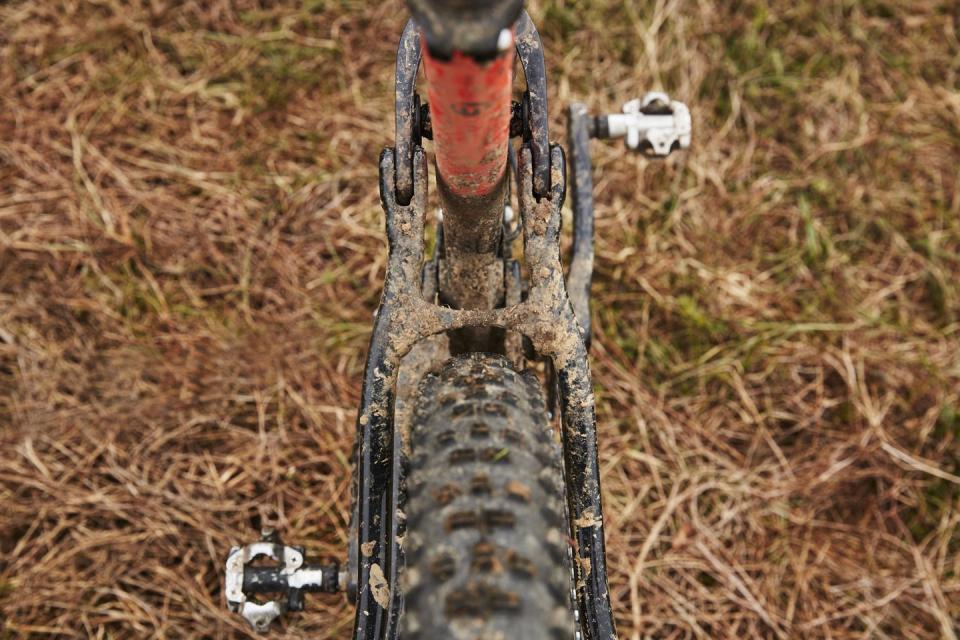
On the steeper trails where we test enduro bikes, the Hawk Hill 3 never felt outmatched by big hits and technical descents. Taking the bike off modest drops, I sensed myself using almost all of the fork and frame travel, although the suspension’s progressive feel quelled worries of bottoming out. The longer, lower, and slacker geometry helped me earn segment PRs on twisty and rocky downhills. The bike’s knobby 27.5x2.4in WTB Trail Boss tires gripped well on loose corners, until they became caked in mud, but the rubber generally handled the mountain’s varied terrain and changing conditions with confidence.
The most fun was had on the area’s token fast, flowy trail system, with hardened berms and jumps galore. There, the suspension came alive, loading up predictably at the lip of the jump and unloading with a pop as the bike took to the air. The 27.5-inch wheels limit the bike’s playfulness when you encounter bigger rocks that are harder to roll over, but show the Hawk Hill 3 a whoop section with smaller bumps and it will keep you on your toes in the best way possible.
The goal of the Hawk Hill 3, according to Cipes, is to pack as much capability as possible into a relatively affordable, short-travel trail bike and make it feel sharp anyway. In most regards, Marin got it right: Despite its hodgepodge of parts, the bike is well thought-out. There’s no teething points or particular gripes to note, and to fault a $2,650 bike for not pedaling as well as a $5,300 bike (the starting price of Marin’s Wolf Ridge line) is hardly fair. For the consistently rocky trails in my area, I’d have the 29-inch Rift Zone, but I’d loath the decision at the sight of the next jump line. The Hawk Hill 3 enables you to ride almost any trail without frustration, and considering the price, you’ll struggle to find more fun per dollar.
You Might Also Like

